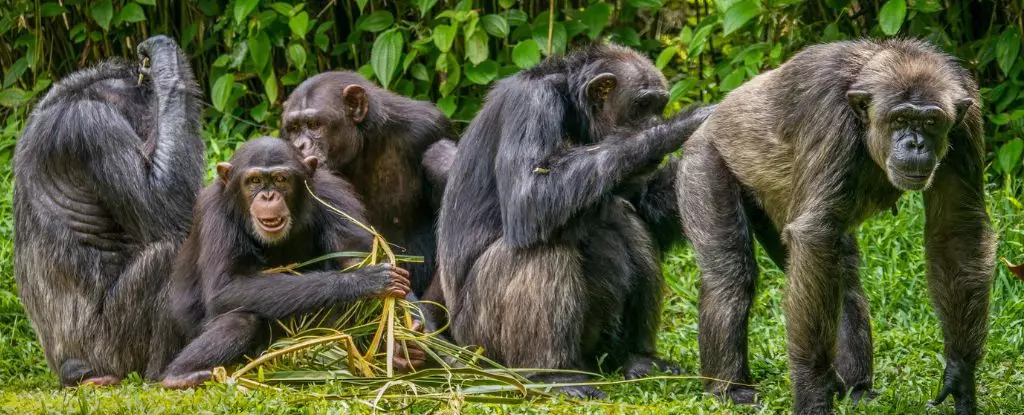While the act of urination is often viewed as a private or mundane necessity, recent research has unveiled its intriguing social dimensions, particularly among primates. A study conducted by scientists from Kyoto University has revealed that urination can be a socially contagious behavior, akin to a contagious laugh or a shared yawn. This research focused on a group of twenty captive chimpanzees (Pan troglodytes) and provided groundbreaking insights into how social structures and hierarchies may influence this basic biological function.
In the wild, chimpanzees exhibit complex social dynamics, with relationships that often determine their behaviors. Observing these dynamics in a controlled environment allowed researchers to scrutinize the phenomenon of synchronized urination. They noted that the actions of a dominant individual, such as a group leader, had significant sway over the urination behaviors of others within the vicinity. When a leader relieved themselves, nearby chimps were likely to follow suit, especially when they were positioned close to one another. This behavior parallels other forms of social engagement seen in the animal kingdom, such as grooming or play, suggesting that urination, despite its basic nature, could have implications for community ties and cohesion.
Research Methodology and Findings
The research took place at the Kumamoto Sanctuary, where four groups of chimpanzees were observed over an impressive total of 604 hours. Each instance of urination that occurred within a minute of another’s was meticulously recorded. The researchers aimed to ascertain whether there were distinct triggers for this synchronized activity, considering factors such as proximity and social dynamics.
The findings highlighted a clear relationship between spatial proximity and synchronized urinating tendencies. Chimps situated within a three-meter radius of one another were significantly more prone to engage in simultaneous urination. This observation points to a fascinating concept of socially contagious urination, leading researchers to wonder further about the unseen social mechanisms at play.
One of the more unexpected insights from this study was the impact of social hierarchies on the likelihood of synchronized urination. Contrary to the researchers’ initial hypothesis, which anticipated a correlation based on intimate social relationships—like frequent grooming—the study found no substantial evidence to support this. Instead, it was revealed that lower-ranking individuals were more inclined to urinate in response to their higher-ranking counterparts. This behavioral pattern suggests that social status and influence play a significant role in such primal actions.
Primate researcher Ena Onishi remarked on the surprising nature of these results, drawing parallels with the phenomenon of contagious yawning. They had expected that connection and familiarity among chimpanzees would heighten the likelihood of simultaneous urination. However, the stark influence of hierarchical positioning indicated a more complex layer of social interaction, where lower-ranking chimps might feel pressured or compelled to mimic the behaviors of their dominant peers.
The implications of this study extend beyond our understanding of primate behavior. As highlighted by researcher Shinya Yamamoto, the intertwining of social environments and urination habits presents multifaceted possibilities for interpretation. It raises important questions about how group dynamics might govern even the most instinctual actions, shedding light on issues related to community hygiene and social bonding within a group.
Furthermore, the study encourages us to reflect on parallel behaviors in humans. Our own tendencies to visit restrooms in pairs or socialize around the act of urination mirror these findings. Cultural expressions, such as the Japanese term “Tsureshon” referring to communal urination, reinforce the idea that this behavior is not mere necessity but a socially constructed act with implications for shared experiences.
The research into contagious urination among chimpanzees uncovers a riveting intersection of biology and social science, illustrating that even the most basic of biological needs can reflect deeper social structures. As we delve deeper into these behaviors, we open avenues for understanding the fundamental underpinnings of social life—not only among primates but across all species, including our own.

